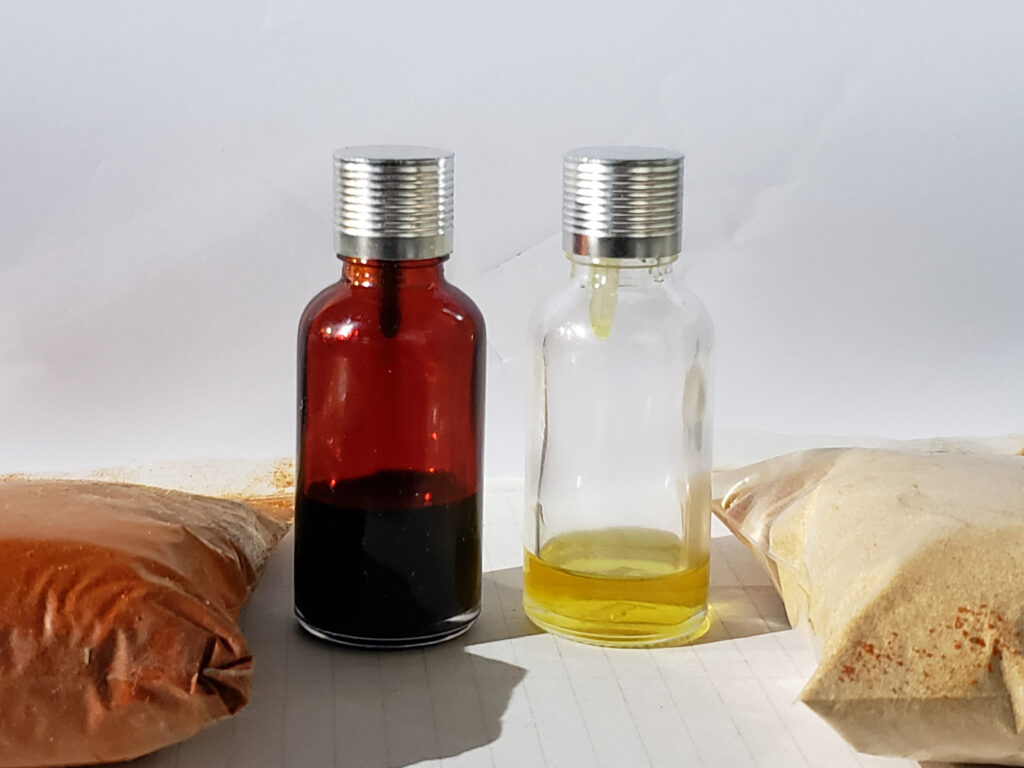Whether extracting essential oils, cannabis compounds, or fragrances, the extraction method significantly impacts the final product’s purity, safety, and overall quality. Common extraction techniques include supercritical CO₂ extraction, steam distillation, solvent extraction, molecular distillation, and ultrasound-assisted extraction. So, why does CO₂ extraction stand out among these methods?
This article compares supercritical CO₂ extraction and steam distillation, highlighting their differences, advantages, and disadvantages.

1. What is Supercritical CO₂ Extraction?
Supercritical CO₂ extraction (SFE) uses CO₂ in its supercritical state to extract target compounds from solid or liquid raw materials. When CO₂ reaches 31.1°C and 73.8 bar, it combines a gas’s diffusivity with a liquid’s solubility, enabling efficient penetration and dissolution of target components.
CO₂ Extraction Process
- Generate Supercritical CO₂: CO₂ is pressurized and heated to its supercritical state.
- Extraction: Supercritical CO₂ penetrates plant material, dissolving desired compounds.
- Separation: Adjust temperature and pressure to release compounds from CO₂.
- Recycle CO₂: CO₂ is recovered and reused, making it eco-friendly and cost-effective.
Pros of CO₂ Extraction
- Selectivity: Precisely targets specific compounds, avoiding impurities.
- Efficiency: Higher yield per unit of raw material compared to steam distillation.
- Purity: No solvent residue, meeting food and pharmaceutical standards.
- Versatility: Suitable for essential oils, terpenes, cannabinoids, and flavonoids.
Cons of CO₂ Extraction
- High Cost: Expensive equipment and technical expertise are required.
- Complexity: Requires specialized training and operating conditions.
2. What is Steam Distillation?
Steam distillation is a traditional method that uses water vapor to extract essential oils or aromatic compounds from plants. It is widely used in the fragrance, pharmaceutical, and cosmetic industries.
Steam Distillation Process
- Heat Water: Generate steam.
- Extraction: Steam passes through plant material, carrying volatile compounds.
- Condensation: Steam cools, forming a water-oil mixture.
- Separation: Essential oil is separated from water and collected.
Pros of Steam Distillation
- Ease of Control: Adjustable temperature and steam volume minimize heat damage.
- Low Cost: Simple equipment, suitable for small-scale production.
- Natural: No chemical solvents, ideal for organic products.
- Accessibility: Affordable for small producers without advanced equipment.
Cons of Steam Distillation
- Low Selectivity: May extract unwanted compounds, reducing purity.
- Low Efficiency: Lower yield per unit of raw material.
- Lower Purity: May contain trace impurities.
- Limited Scope: Only effective for certain volatile compounds.
3. CO₂ Extraction vs. Steam Distillation: 4 Key Differences
| Key Aspect | CO₂ Extraction | Steam Distillation |
| Solvent | CO₂ | Water and steam |
| Temperature | 95-100°F (low temperature) | 140-212°F (high temperature) |
| Selectivity | Precise targeting of compounds | Broad extraction, less selective |
| Efficiency | High yield per unit of raw material | Lower yield, higher material loss |
| Purity | High, no residue | May contain trace impurities |
4. Which Method is Better?
The choice between CO₂ extraction and steam distillation depends on the following factors:
- Choose CO₂ extraction if you prioritize high purity, efficiency, and versatility.
- Choose steam distillation if you have a limited budget or aim to preserve natural flavors.
- In some cases, both methods are combined to achieve optimal extraction results.
5. Frequently Asked Questions (FAQ)
✅ How much more expensive is CO₂ extraction than steam distillation?
CO₂ extraction equipment costs 3-5 times more than steam distillation. However, its efficiency and recyclability can reduce long-term operational costs.
✅ Which method is more eco-friendly?
CO₂ extraction is more eco-friendly, as CO₂ is recyclable, while steam distillation requires significant water resources.
✅ Why is CO₂ extraction better for CBD extraction?
CBD is heat-sensitive, and CO₂ extraction operates at lower temperatures, preserving active compounds.
✅ Which method is better for home or small businesses?
Steam distillation is more suitable for small businesses or home use due to its affordability and simplicity.
✅ Are CO₂ extraction products of higher quality?
Yes, CO₂-extracted oils are typically purer, more concentrated, and retain more active compounds.